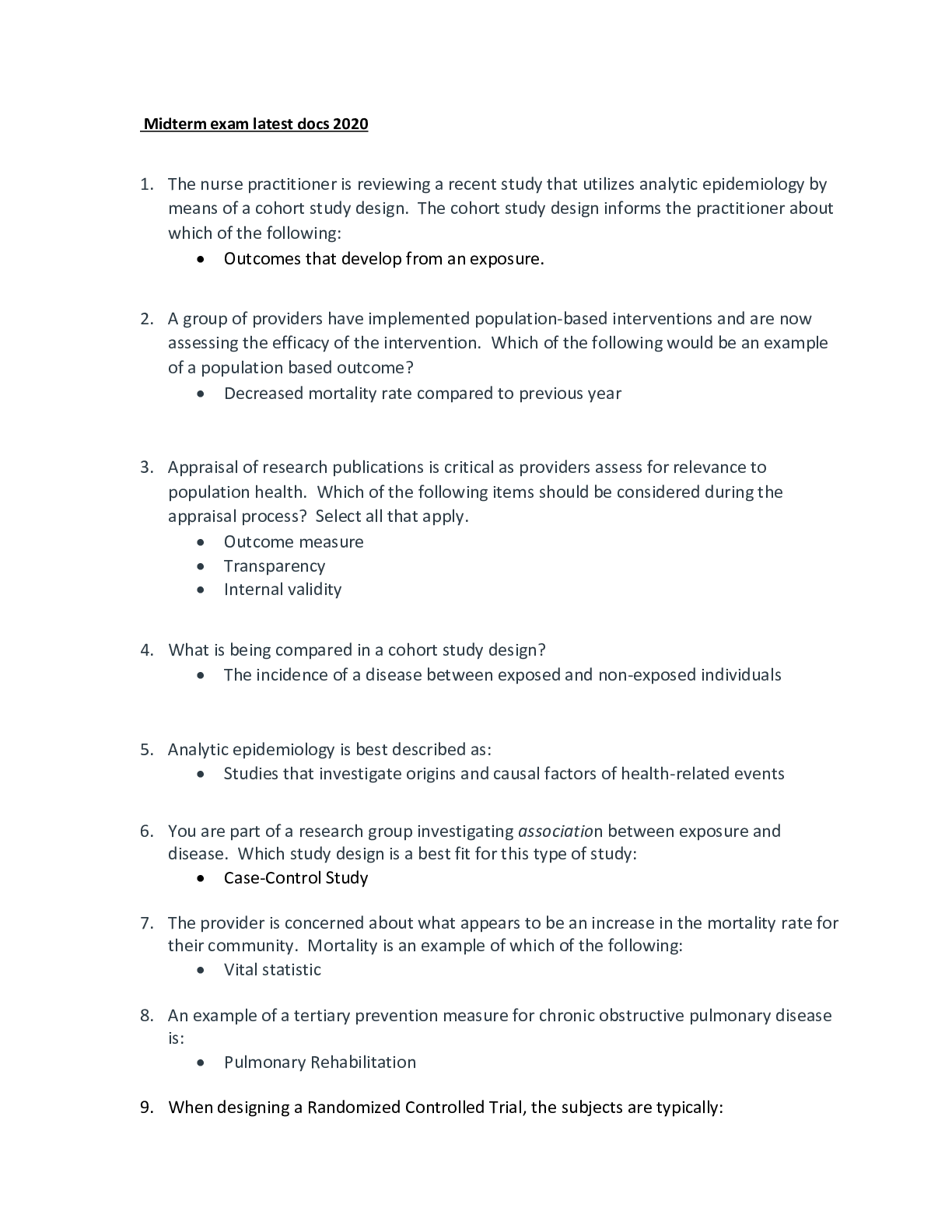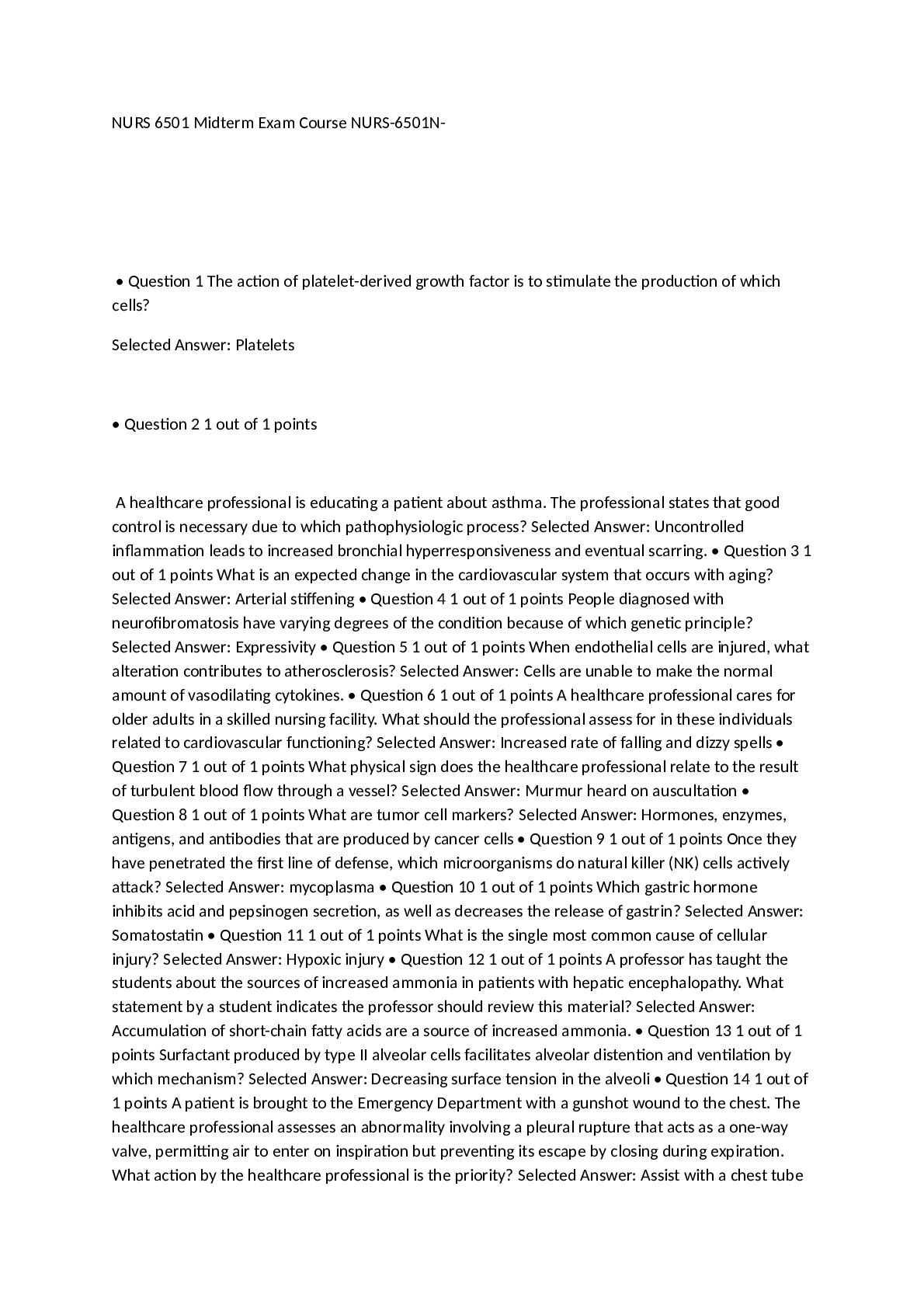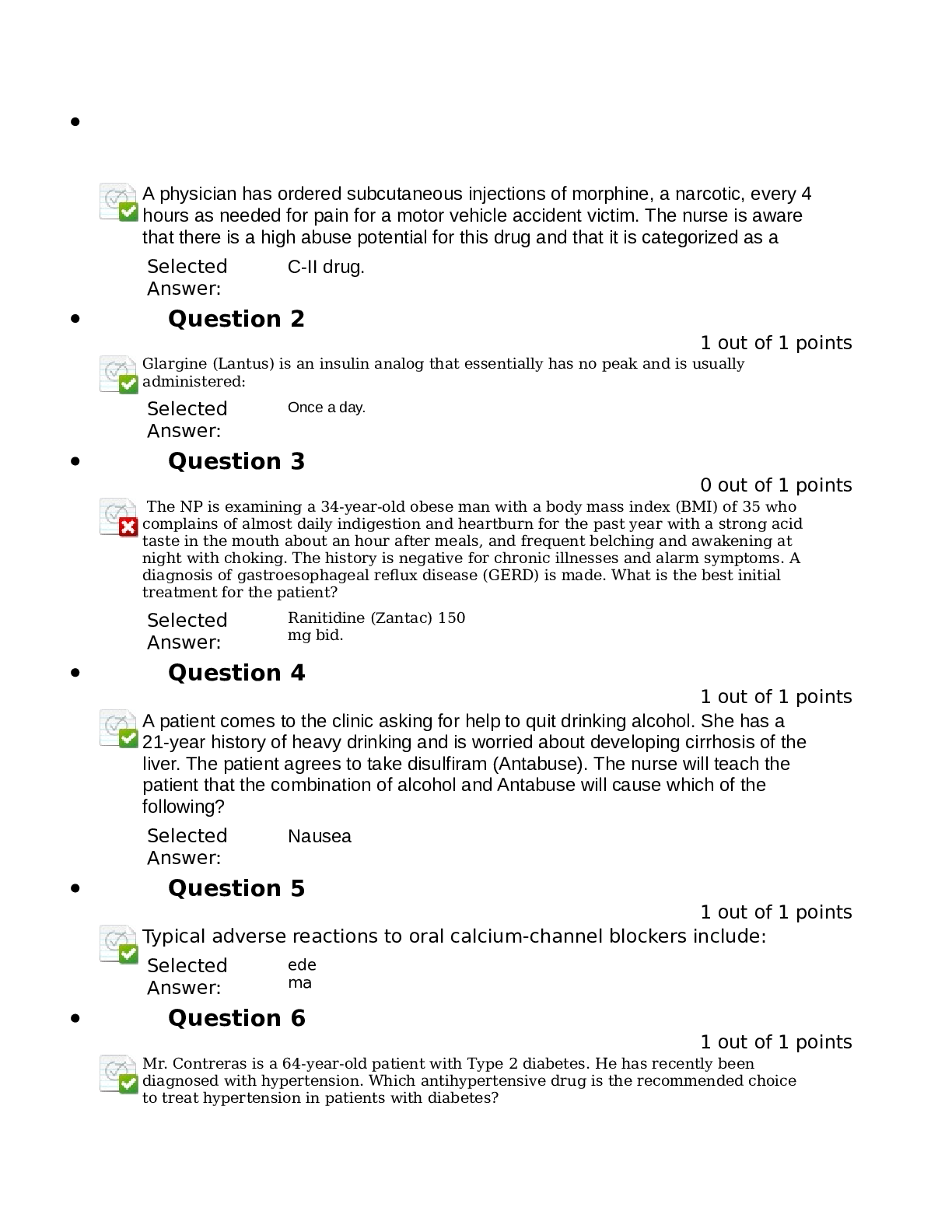*NURSING > QUESTIONS & ANSWERS > NURS 6630 Midterm Exam Latest 2021/2022 questions with answers (All)
NURS 6630 Midterm Exam Latest 2021/2022 questions with answers
Document Content and Description Below
Question1 1 out of 1 points When an unstable patient asks why it is necessary to add medications to his current regimen, the PMHNP’s best response would be: Selected Answer: C. “Many psych... iatric illnesses involve several dys-functioning neurotransmitter systems in the brain. Often, a single medication may only effect one or two of the dys-functioning systems. The addition of another medication can work with the current medication in stabilizing multiple neurotransmitter systems and help to alleviate your symptoms.” Question 2 0 out of 1 points The PMHNP is meeting with a new mother who would like to begin taking medication again to treat her bipolar depression; she is breastfeeding her 2-month old daughter. The PMHNP recognizes that which of the following medications is contraindicated for this patient? Selected Answer: C. Lithium (Lithobid) Question 3 1 out of 1 points Mr. Gordon is a middle-aged client who was started on antidepressant monotherapy for depression. After beginning this medication, the PMHNP noticed that this client seemed to swing into a hypomanic episode. What can the PMHNP infer from this behavior change? Selected Answer: A. This client may have Bipolar III disorder Question 4 1 out of 1 points A patient presents with frequent episodes of mania. Which statement describes an appropriate treatment approach for this patient? Selected Answer: B. “The patient could benefit from an anticonvulsant.” Question 5 1 out of 1 points The student inquires about antipsychotic medications. Which response by the PMHNP describes the factors that contribute to reduced risk of extrapyramidal symptoms (EPS) for patients who take antipsychotics? Selected Answer: B. Those that are potent D2 antagonists with 5HT2A antagonism properties Question 6 1 out of 1 points After ordering flumazenil (Rumazicon) the PMHNP cautions the staff to monitor for which possible effect? Selected Answer: D. All of the above Question 7 1 out of 1 points The PMHNP is caring for a patient who is taking antipsychotics heard the psychiatrist tell the patient that the patient would be placed on a different antipsychotic agent called an atypical antipsychotic. What neurotransmitters will this new medication work on? Selected Answer: A. dopamine and serotonin Question 8 1 out of 1 points While genes have potential to modify behavior, behavior can also modify genes. How do genes impact this process? Selected Answer: B. Changes made to proteins lead to changes in behavior. Question 9 1 out of 1 points Mrs. Schwartzman is a 52-year-old client with schizophrenia and no established history of depression. When meeting with the PMHNP, she presents with apathy and withdrawn social behavior, and she reports a loss of joy from enjoyable activities since starting her new medication. What does the PMHNP infer from this encounter with the client? Selected Answer: C. The new medication is blocking D2 receptors in the mesolimbic system Question 10 1 out of 1 points A nursing student is seeking clarification on the use of anticonvulsants to treat depression and is unclear about most effective outcomes. Which of the following agents does the PMHNP convey as having uncertain outcomes? Selected Answer: B. Gabapentin (Neurontin) Question 11 1 out of 1 points As it relates to G-protein linked receptors, what does the PMHNP understand about medications that are used in practice? Selected Answer: A. Most medications that act on G-protein linked receptors have antagonistic traits. Question 12 1 out of 1 points A patient is seeking pharmacological treatment for smoking cessation. Which drug class does the PMHNP prescribe to the patient? Selected Answer: D. Varenicline (Chantix) Question 13 1 out of 1 points The PMHNP is caring for a patient with schizophrenia and is considering a variety of treatment approaches. The PHMNP selects a viable treatment that is consistent with the “dopamine hypothesis of schizophrenia.” What action does the PMHNP anticipate this treatment having on the patient? Selected Answer: B. Hyperactivity in the mesolimbic dopamine pathway mediates the positive symptoms of schizophrenia. Question 14 1 out of 1 points Though medications have the ability to target neurotransmitter release into the synapse by the presynaptic neuron it is not always necessary. The PMHNP understands that this is because: Selected Answer: C. Neurotransmitters can spread by diffusion. Question 15 1 out of 1 points A patient is being prescribed a sedating antidepressant, but is concerned about weight gain. Which medication is most likely to be prescribed to addresses the patient’s concerns? Selected Answer: D. trazadone (Oleptro [Show More]
Last updated: 1 year ago
Preview 1 out of 39 pages
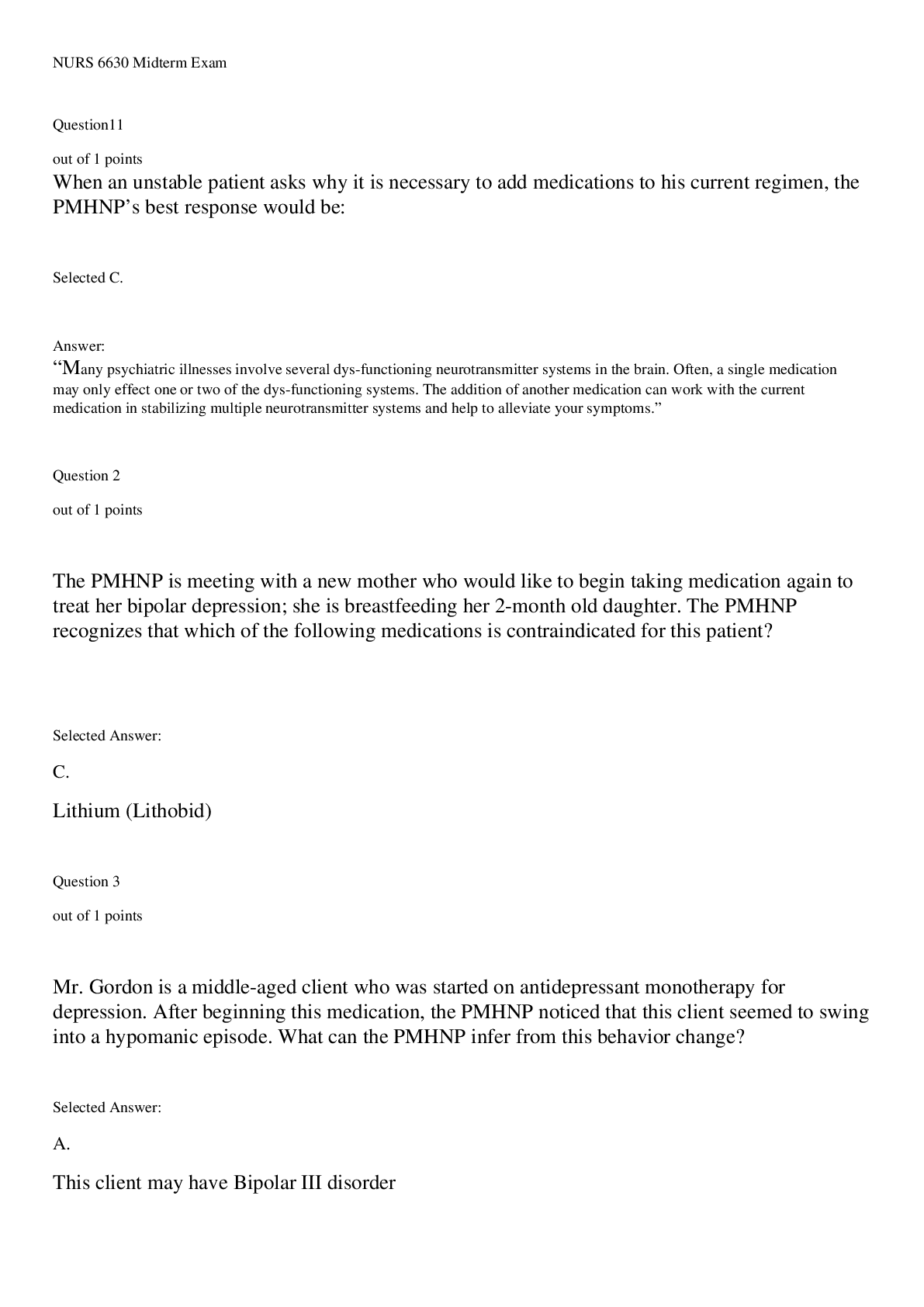
Reviews( 0 )
Document information
Connected school, study & course
About the document
Uploaded On
May 14, 2022
Number of pages
39
Written in
Additional information
This document has been written for:
Uploaded
May 14, 2022
Downloads
0
Views
48

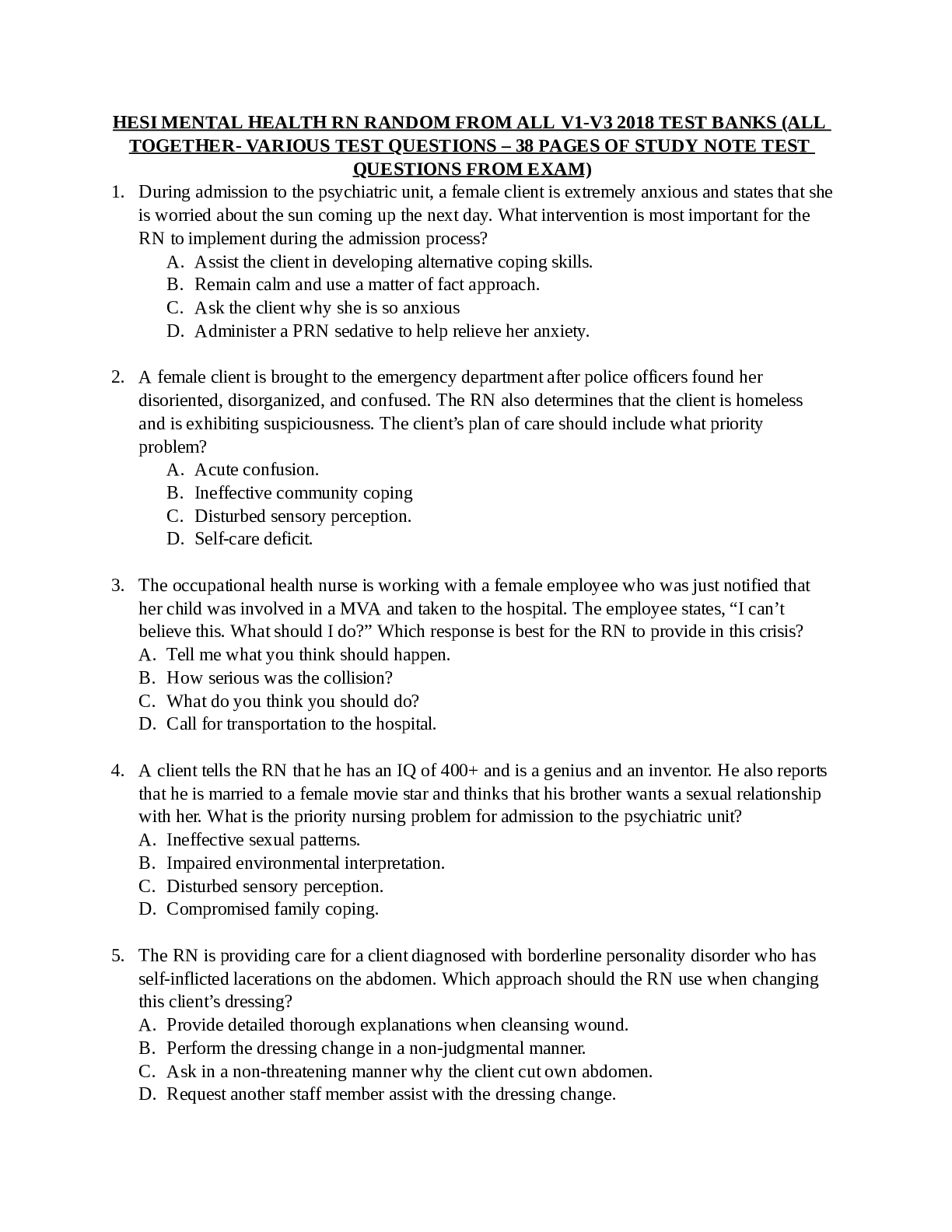

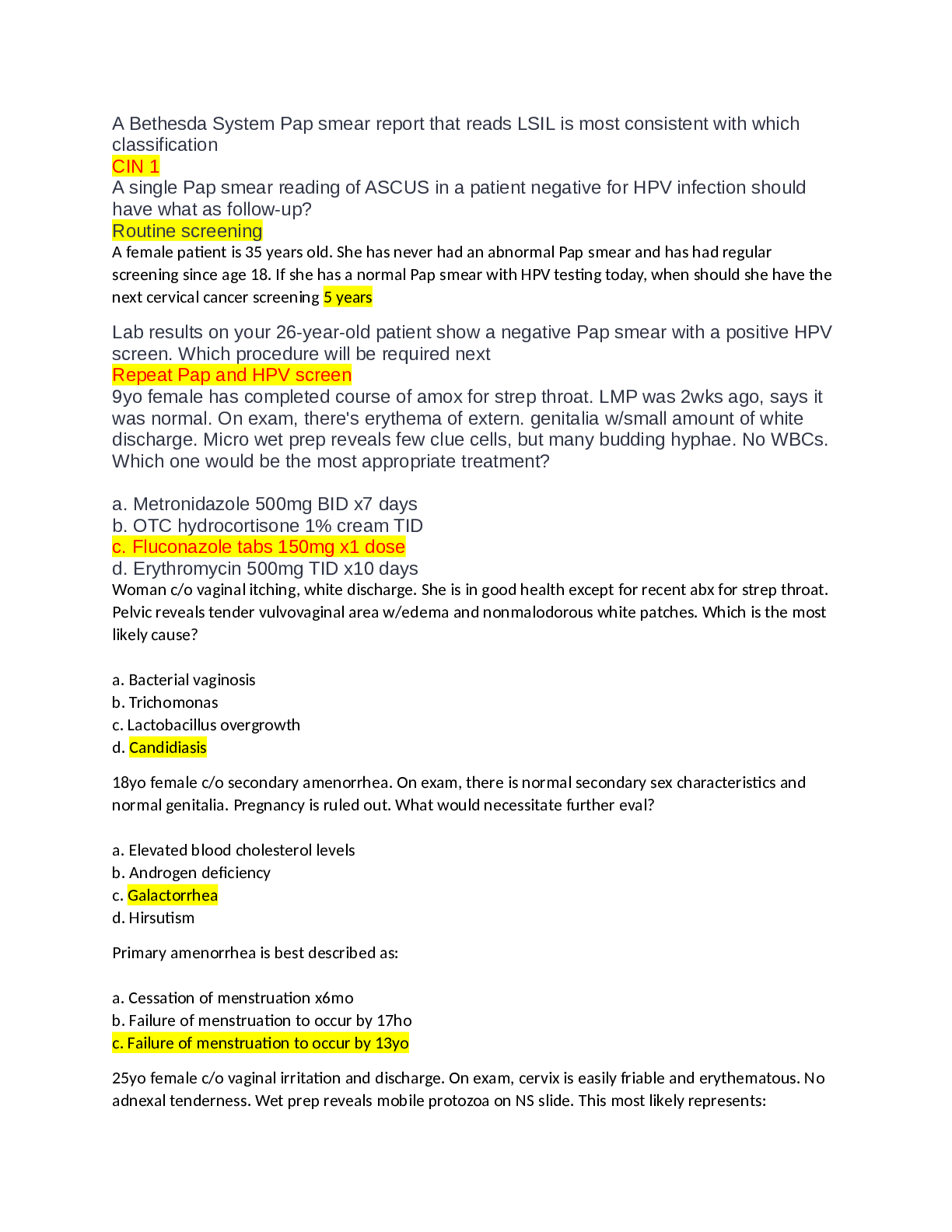

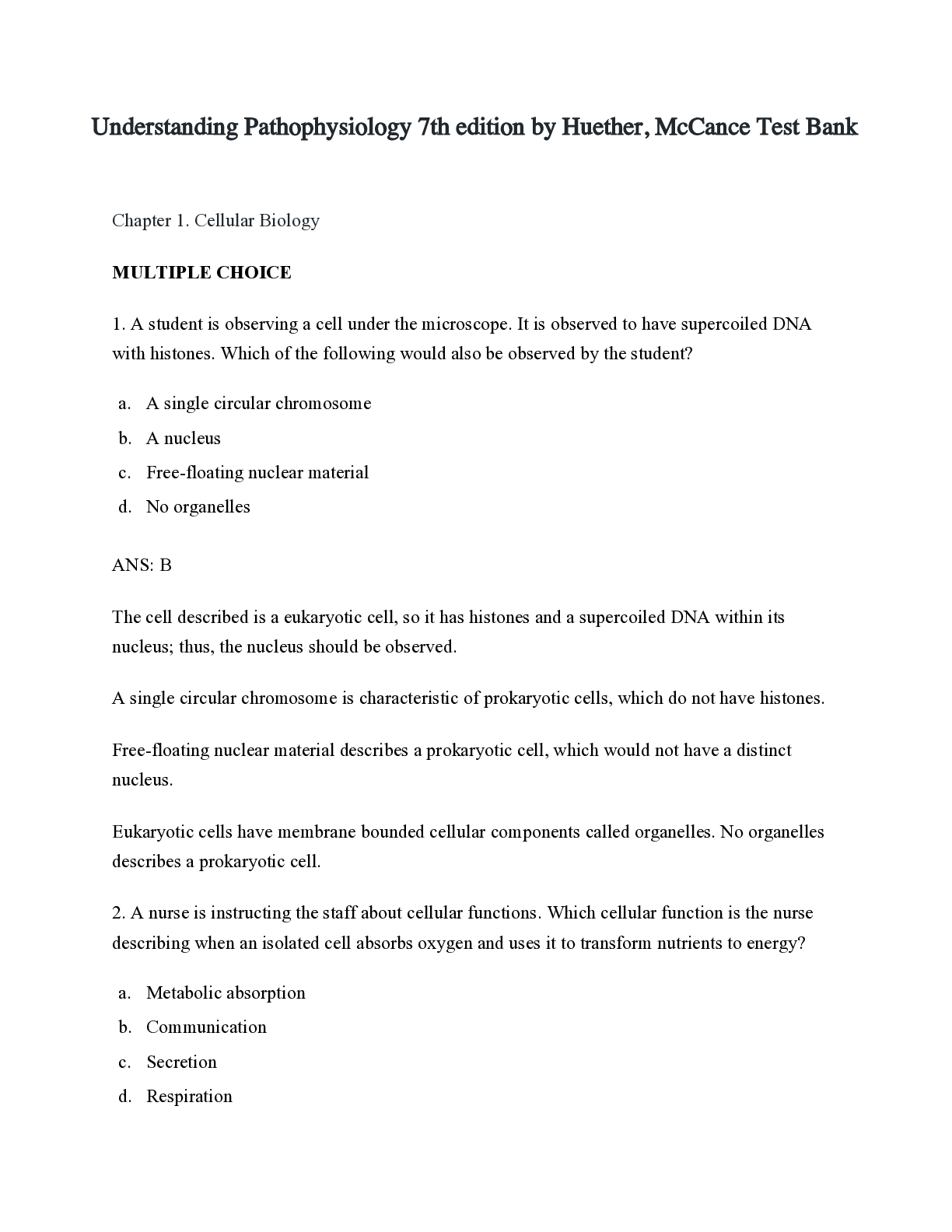
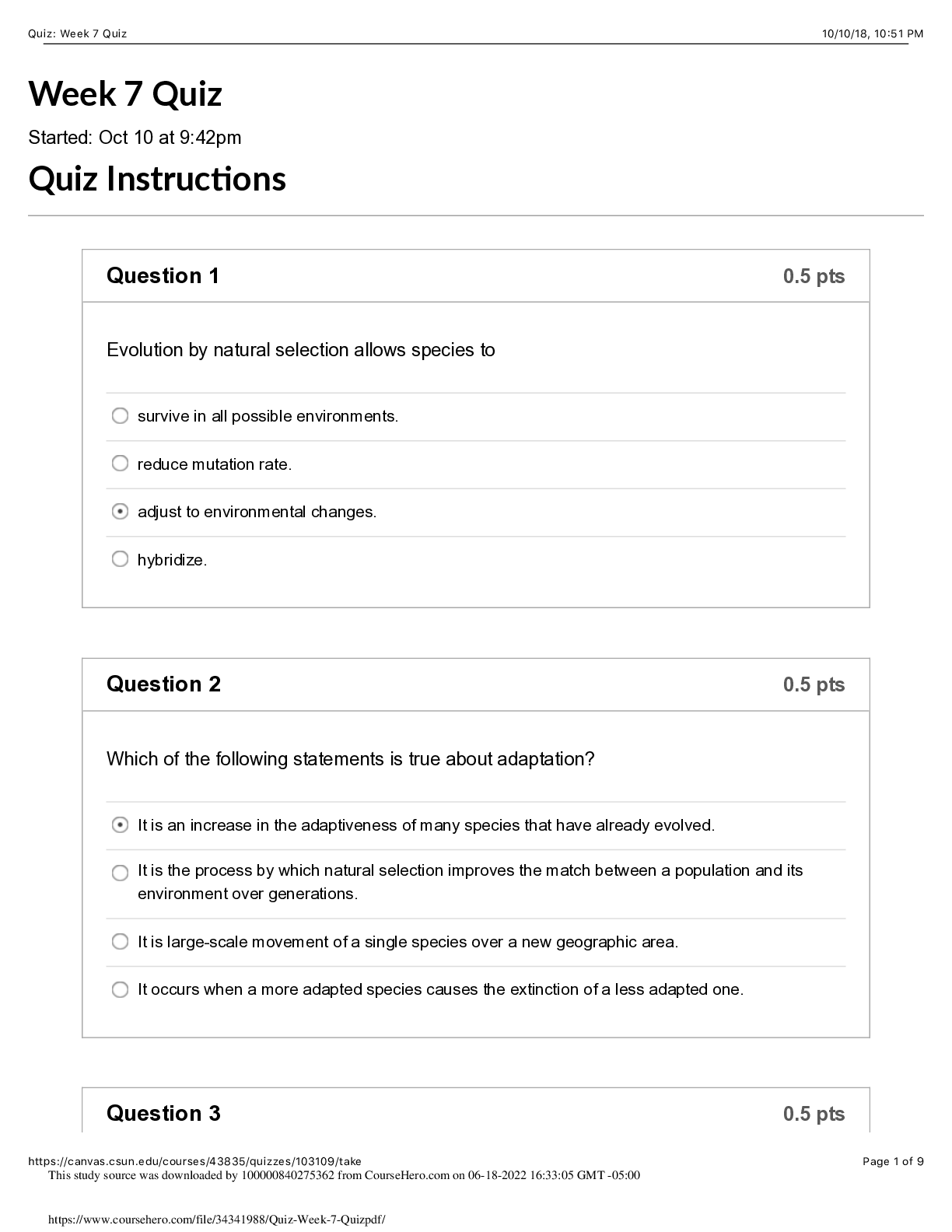
.png)

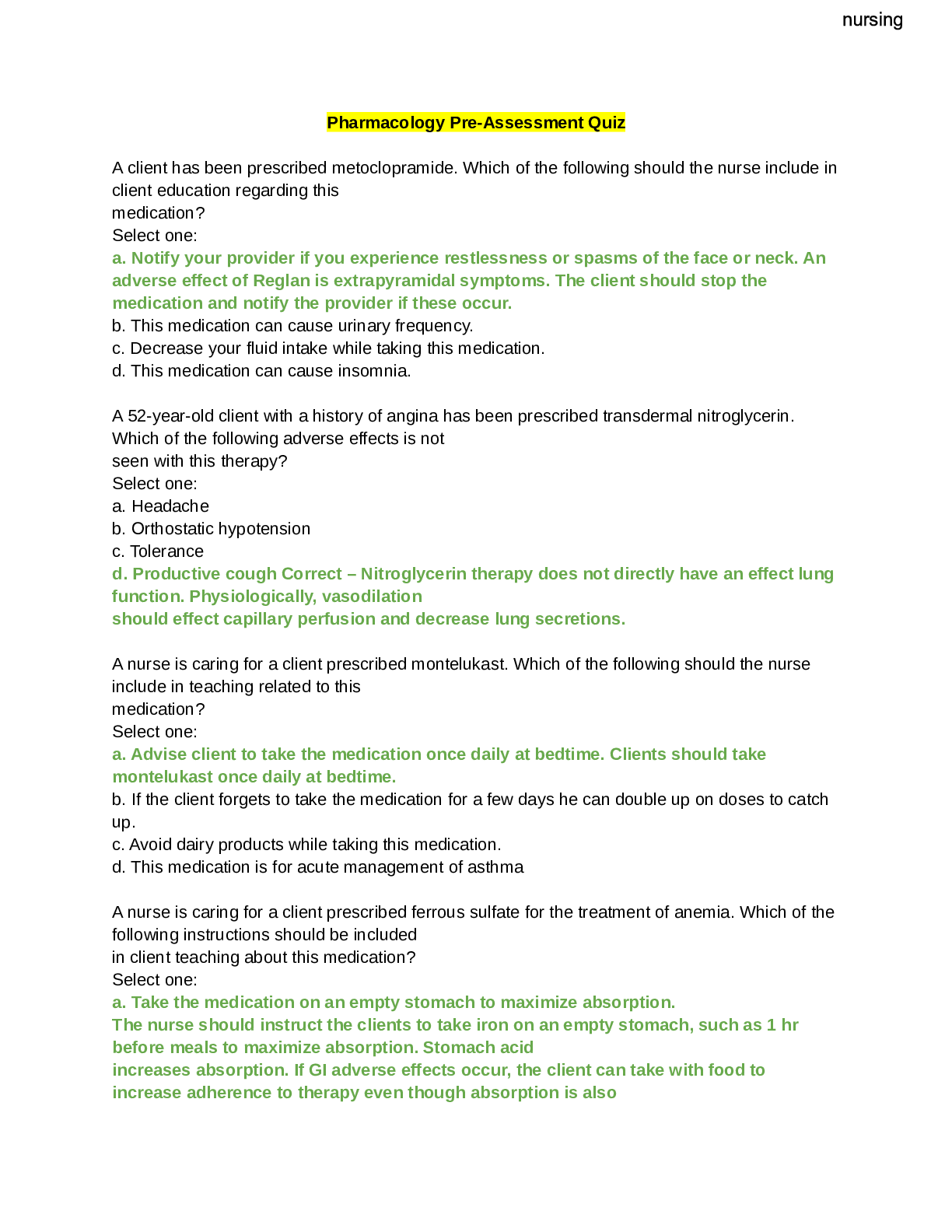

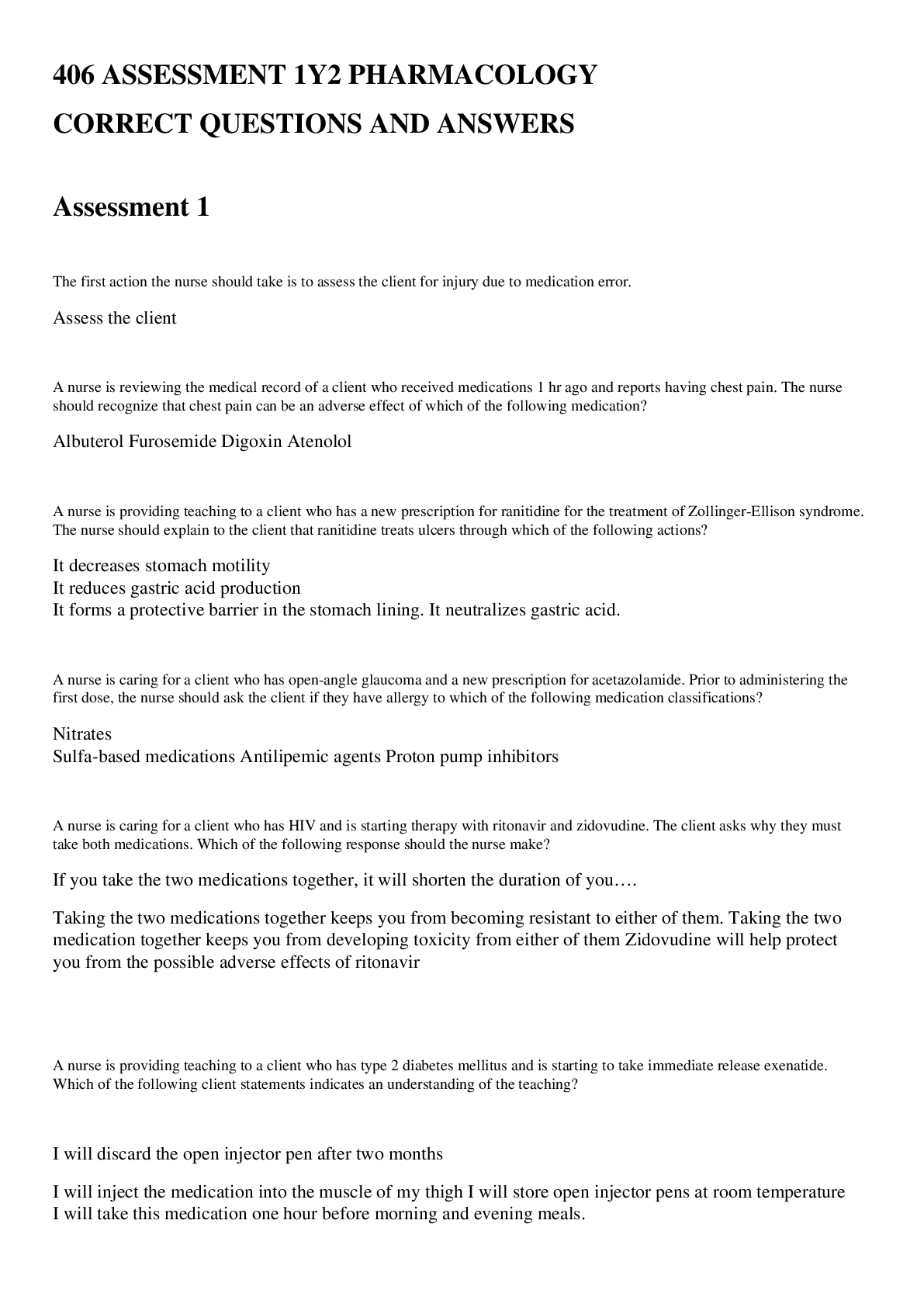

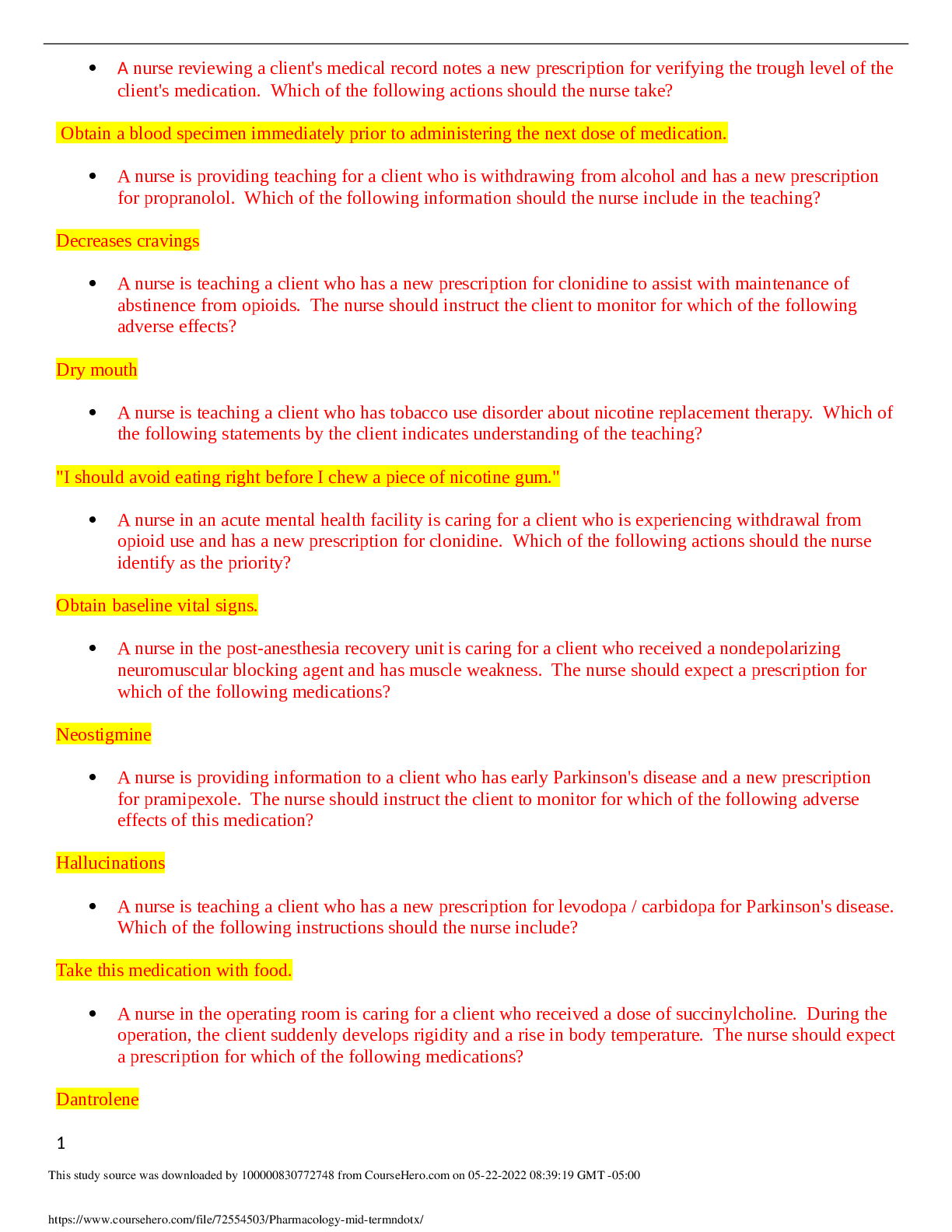
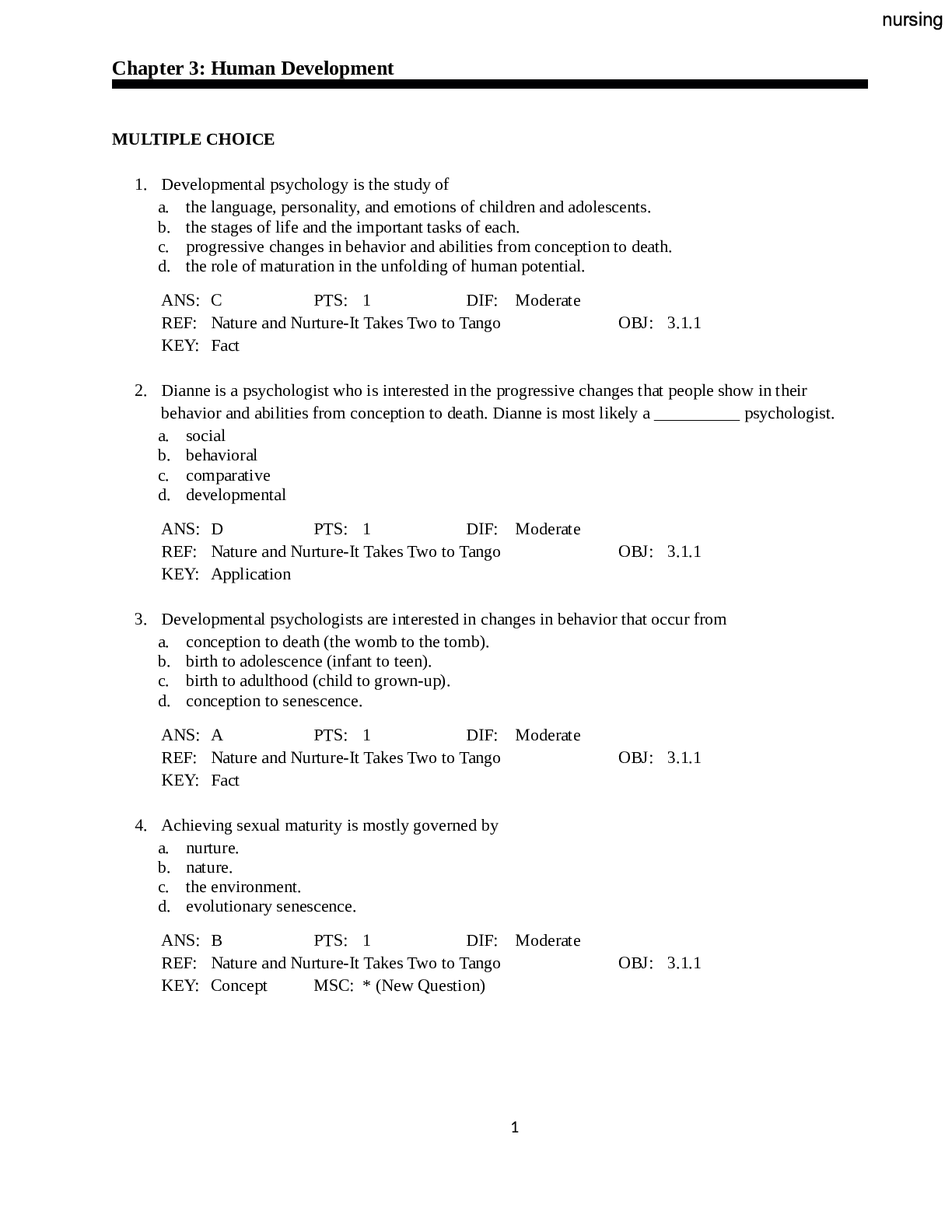

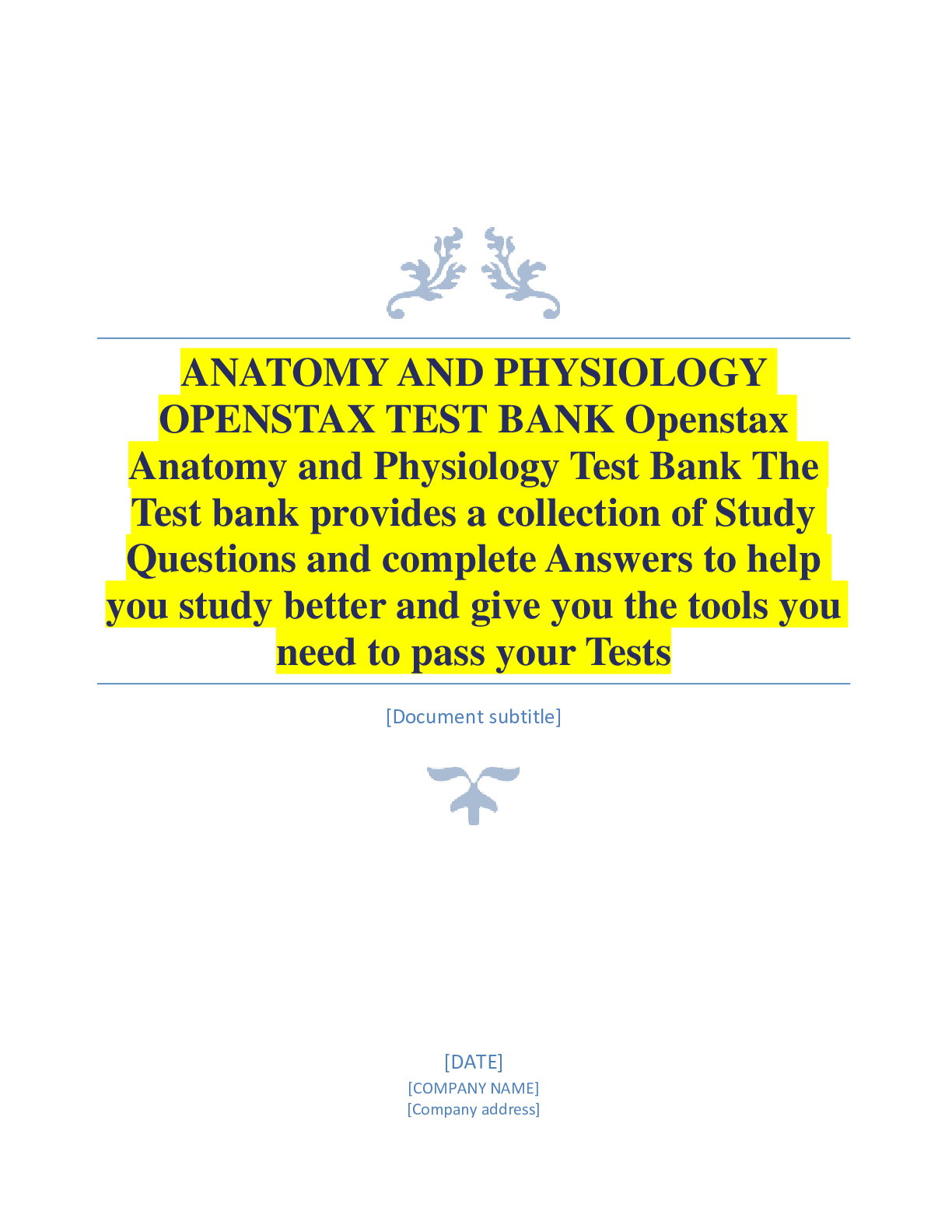
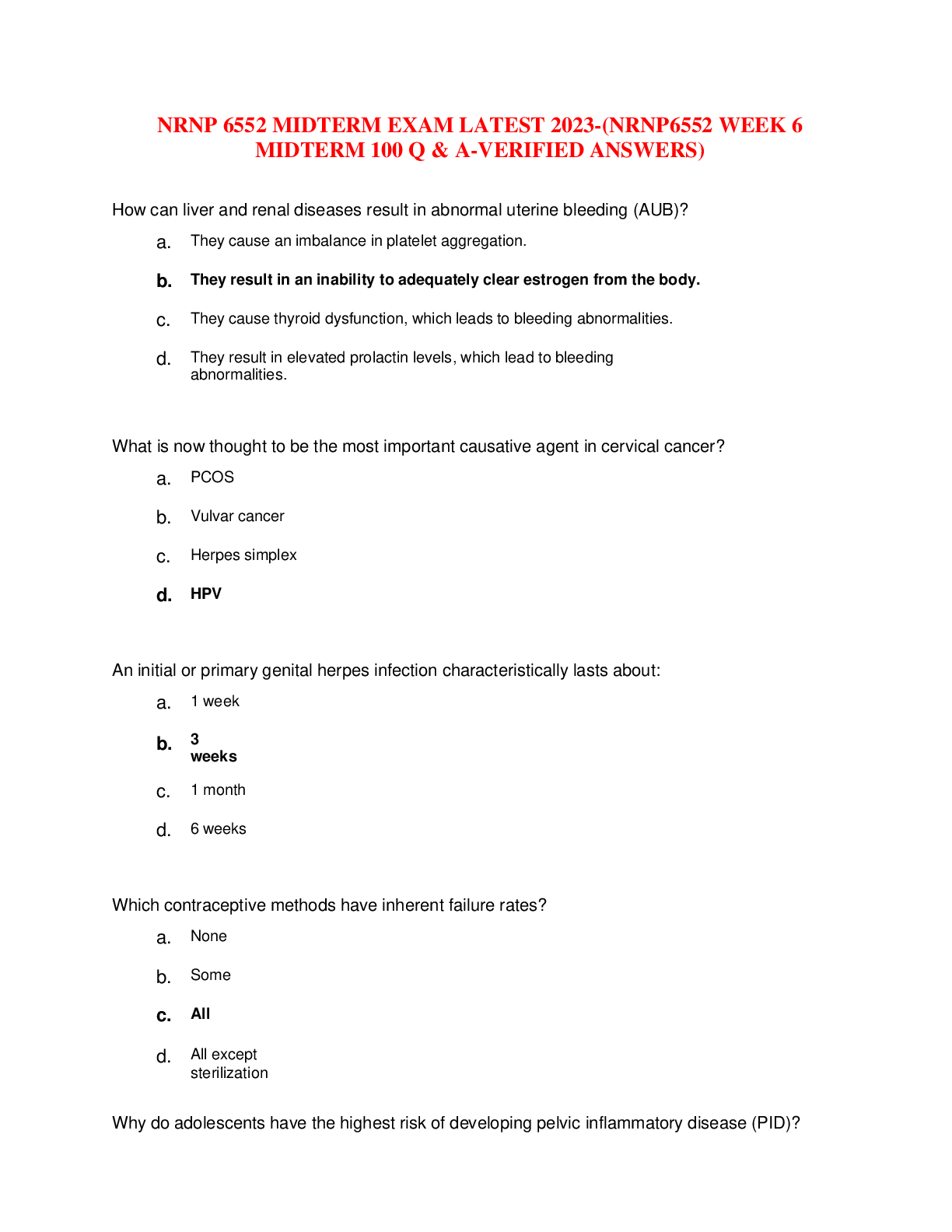
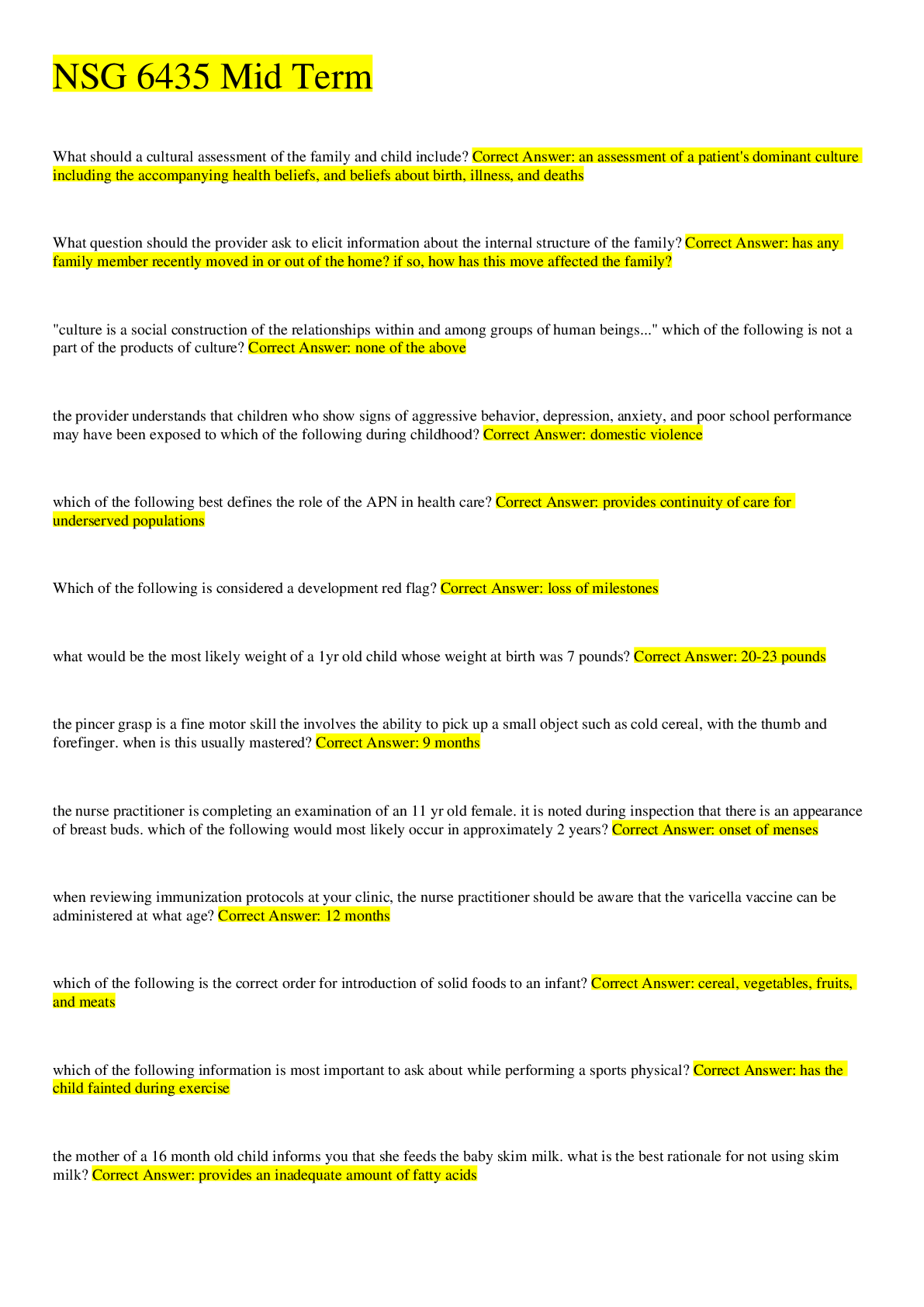
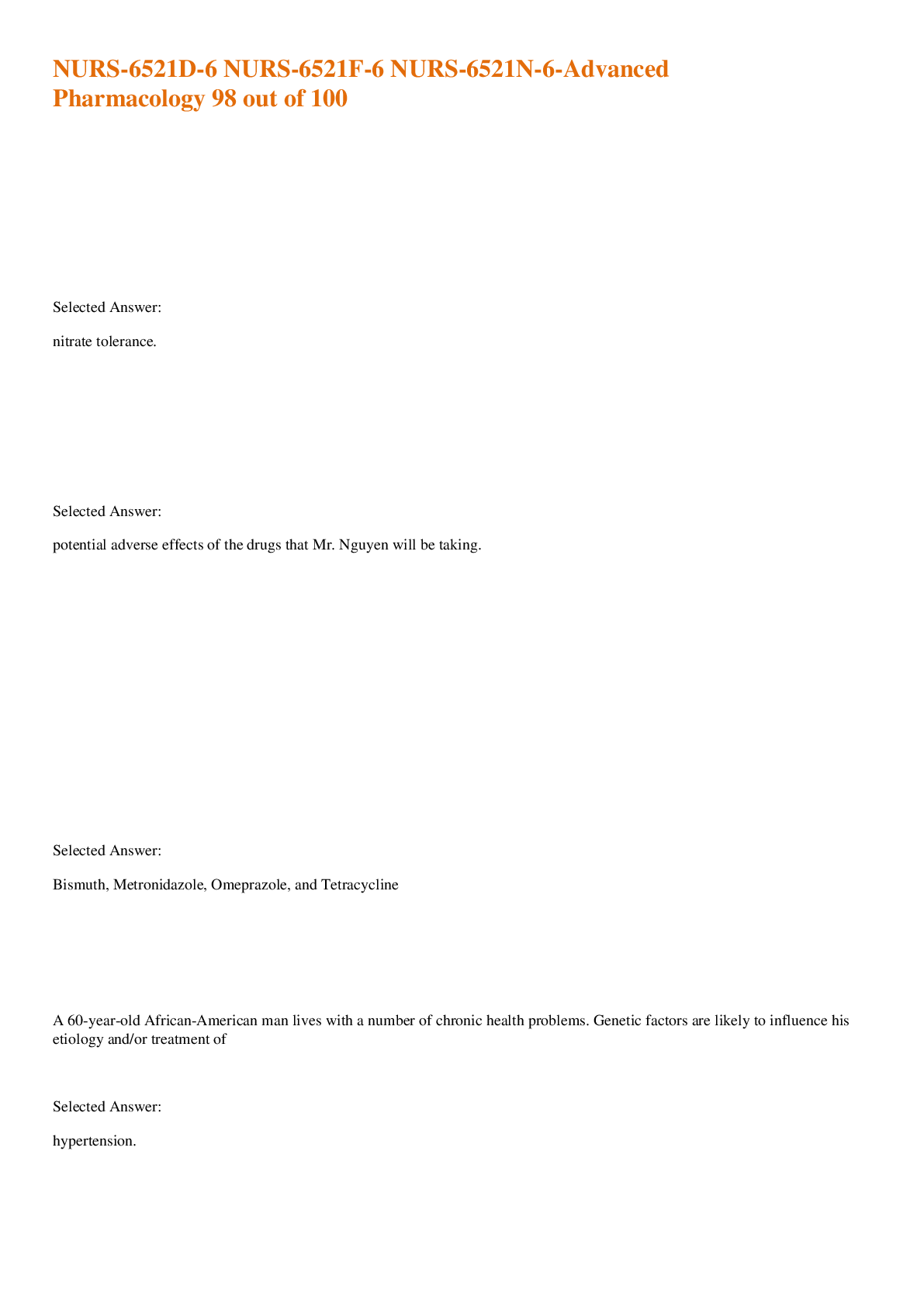
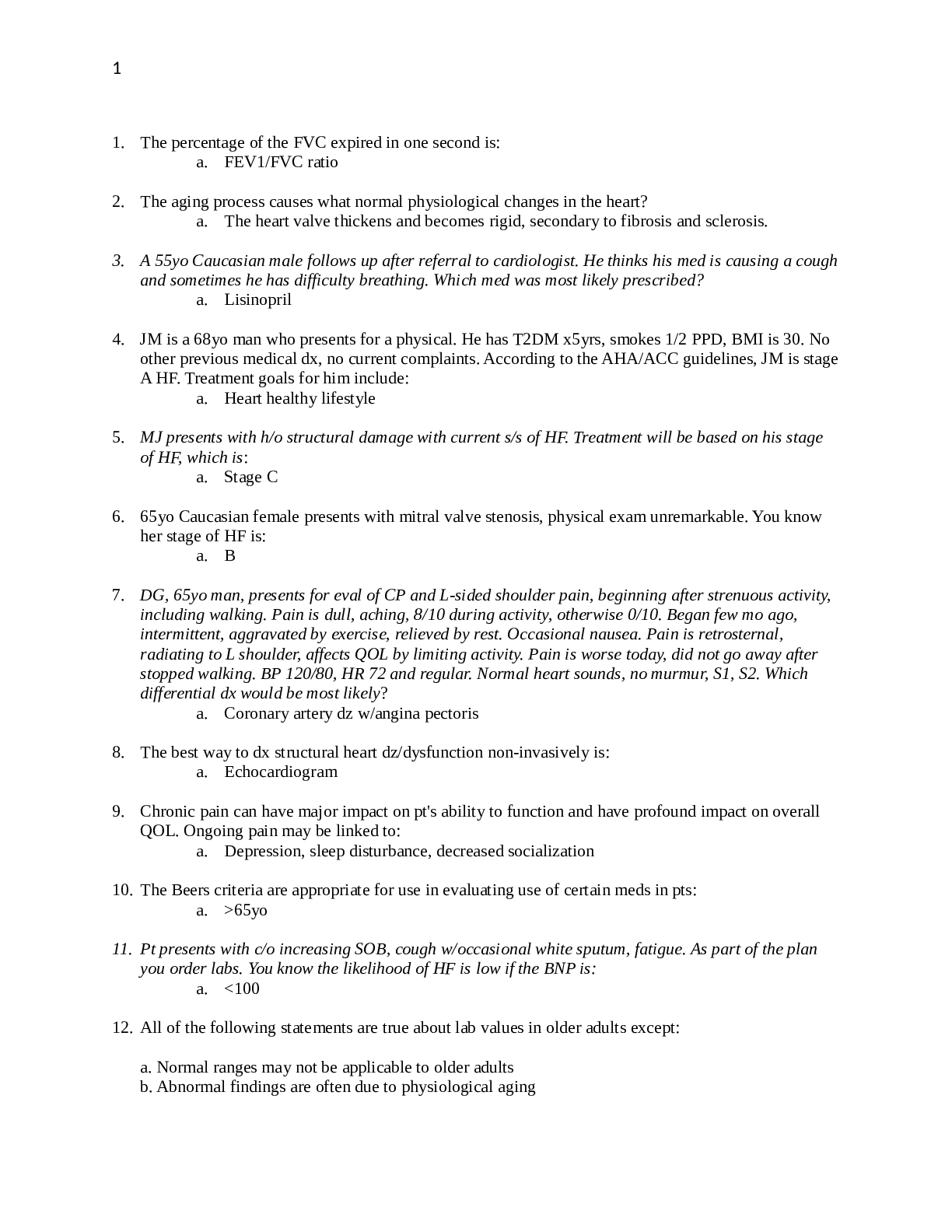

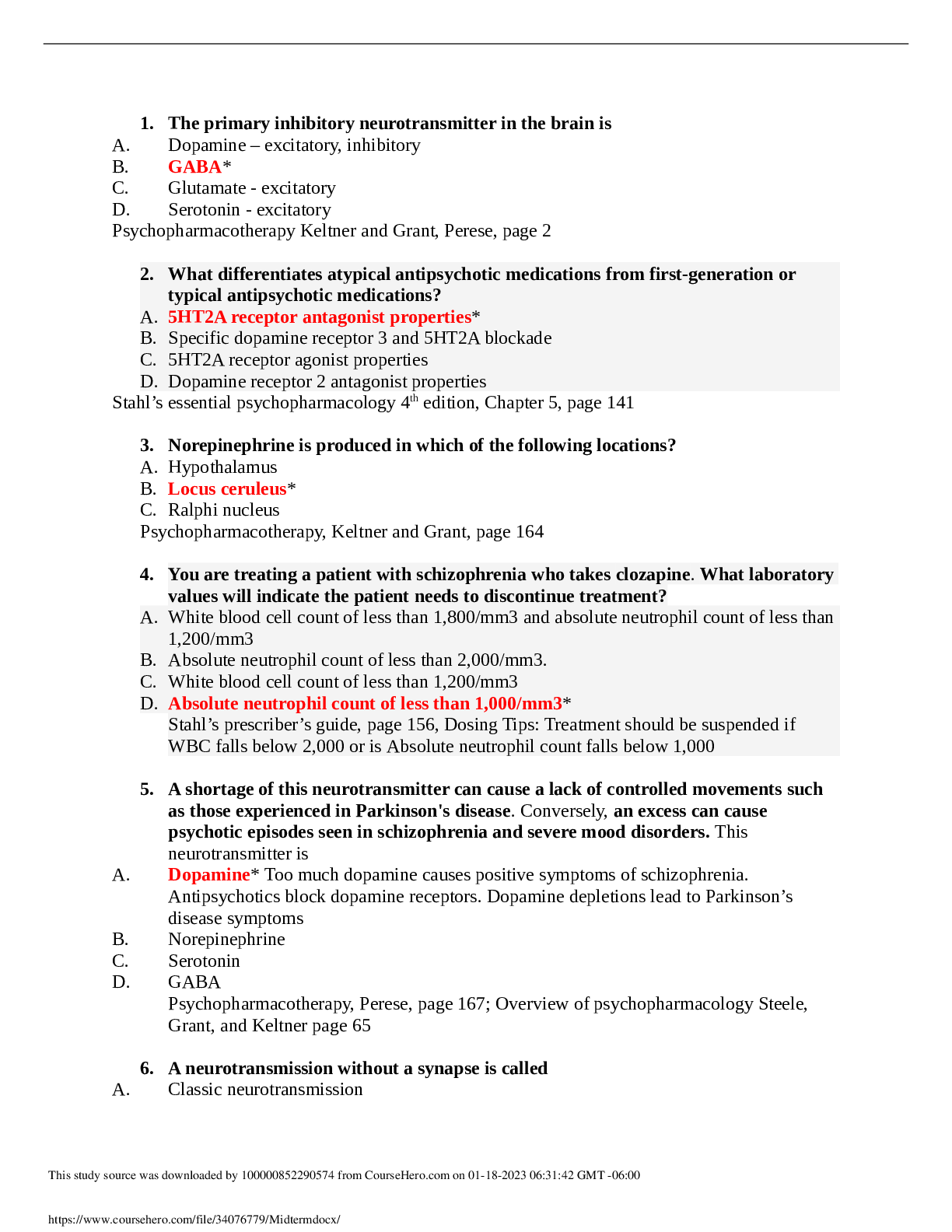

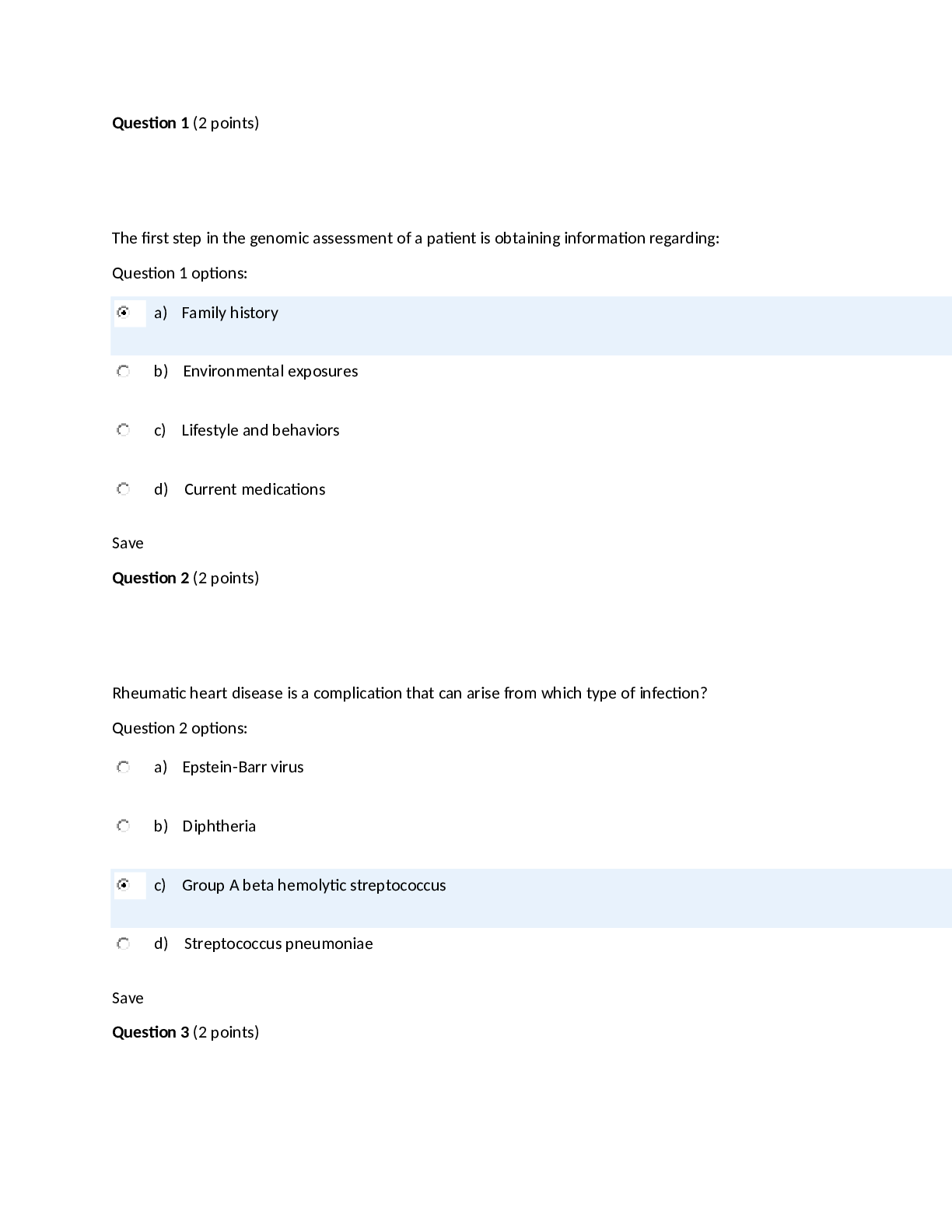
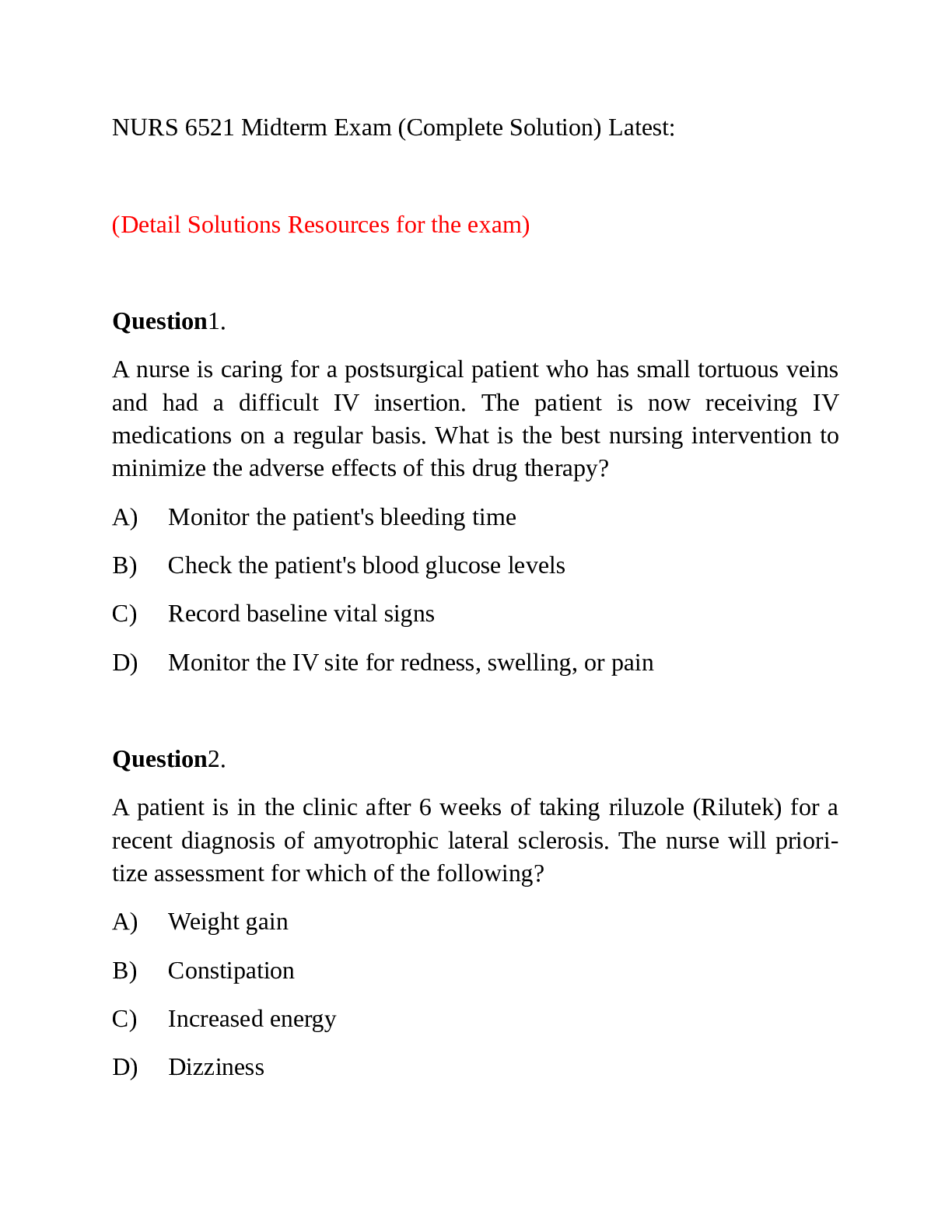
.png)
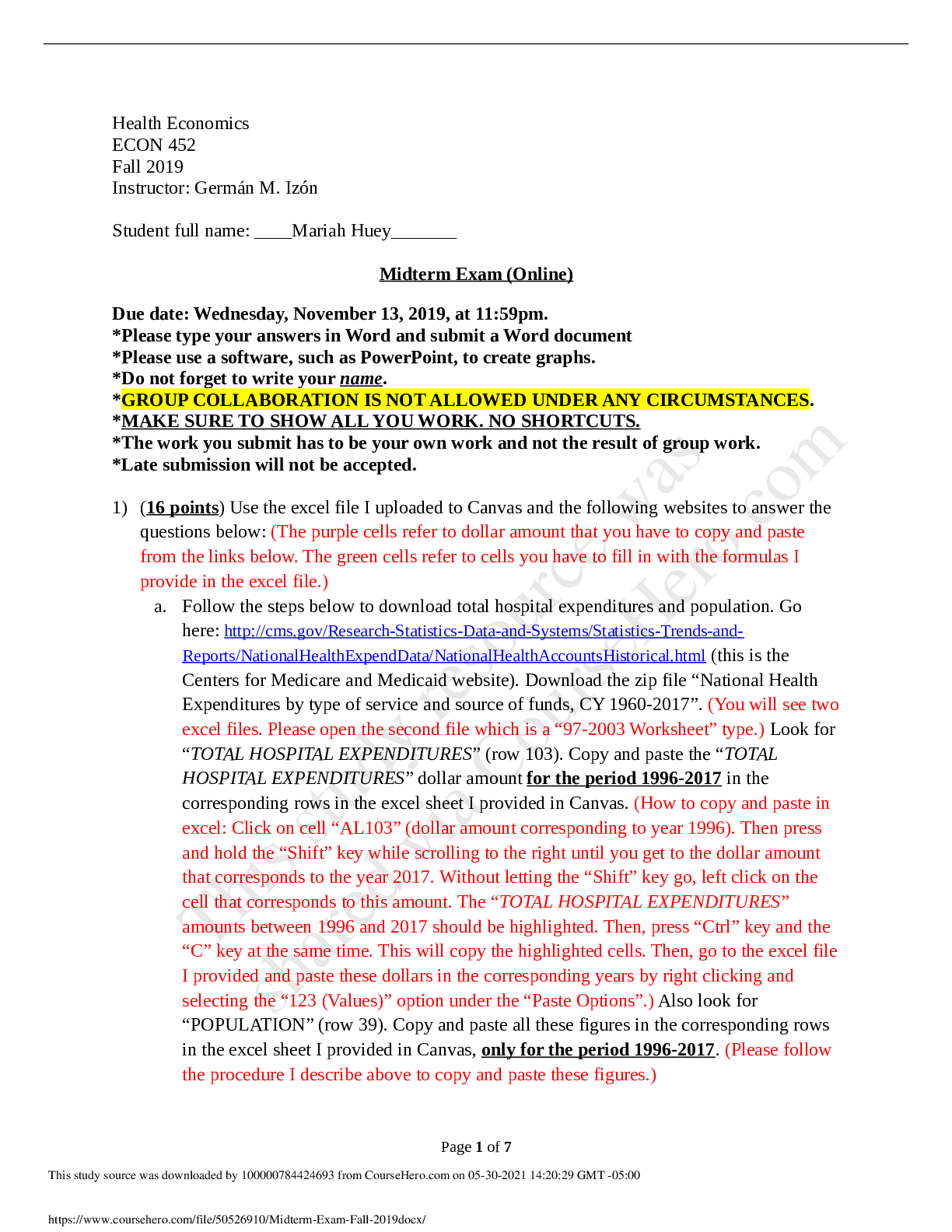
, Questions and Answers, All Correct Study Guide, Download to Score A.png)
